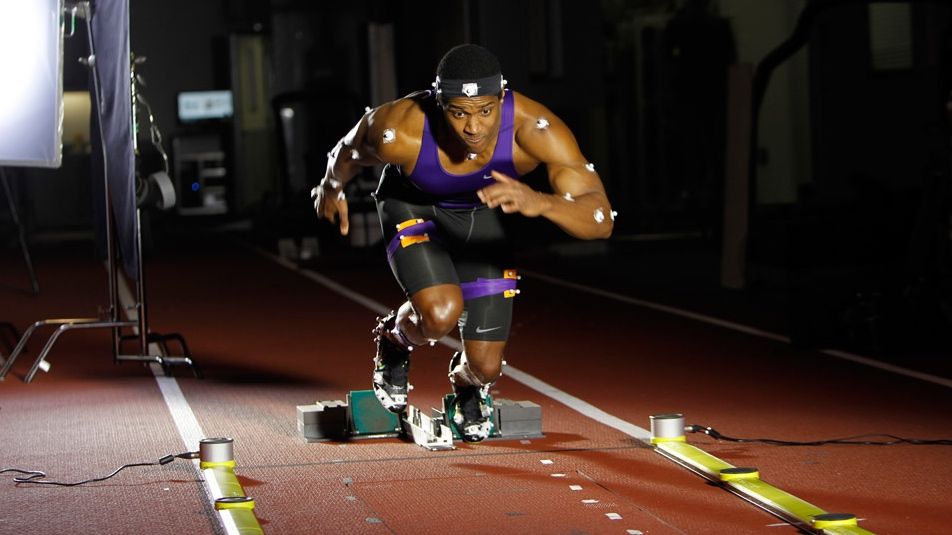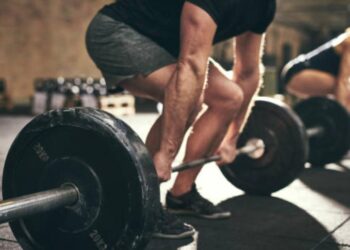In the ever-evolving landscape of athletic performance, the pursuit of optimal training methodologies is ceaseless. From amateur enthusiasts striving for personal bests to elite professionals pushing the boundaries of human capability, the effectiveness of a training regimen is paramount. Gone are the days of one-size-fits-all approaches; modern sports science, fueled by technological advancements and deeper physiological understanding, has ushered in an era of highly customized and innovative training protocols. This comprehensive exploration delves into the cutting-edge of training regimen innovations, examining the principles, technologies, and methodologies that are redefining what’s possible in athletic development. We will uncover how these advancements are not just enhancing performance but also promoting longevity and preventing injuries, making athletes stronger, faster, and more resilient than ever before.
The Paradigm Shift in Training Philosophy

Traditional training often emphasized volume and intensity without sufficient consideration for individual differences, recovery, or the specific demands of a sport. The new paradigm, however, is built on a foundation of personalization, precision, and continuous adaptation.
A. Individualization as the Core Principle
Recognizing that every athlete is unique—possessing distinct genetic predispositions, physiological responses, injury histories, and lifestyle factors—is the cornerstone of modern training. No two athletes will respond identically to the same stimulus. This principle necessitates:
- Detailed Assessment: Comprehensive initial assessments are crucial. These include:
- Physiological Testing: VO2 max, lactate threshold, power output, strength assessments (e.g., 1RM, isometric strength).
- Biomechanical Analysis: Gait analysis, movement patterns, identification of asymmetries or compensations.
- Nutritional Analysis: Dietary habits, potential deficiencies, energy needs based on activity levels.
- Psychological Profiling: Motivation levels, stress tolerance, mental resilience, goal setting.
- Genetic Predisposition: While still emerging, understanding genetic markers related to recovery, muscle fiber type, and injury susceptibility can offer insights.
- Adaptive Programming: Training plans are not static documents. They are living blueprints that evolve based on an athlete’s progress, recovery status, competitive schedule, and even mental state. This requires continuous monitoring and agile adjustments.
B. The Integration of Science and Technology
The rapid advancements in sports science and technology have revolutionized how athletes train, monitor progress, and recover. Data-driven insights are replacing guesswork, leading to more informed decision-making.
- Wearable Technology: Smartwatches, heart rate monitors, GPS trackers, and accelerometers provide real-time data on:
- Training Load: Quantifying the stress placed on the body during exercise (e.g., Training Stress Score (TSS), RPE).
- Physiological Responses: Heart rate variability (HRV), sleep patterns, skin temperature, oxygen saturation. HRV, in particular, has emerged as a key metric for assessing recovery and readiness to train. A higher HRV generally indicates better recovery and parasympathetic nervous system dominance, while a lower HRV can signal fatigue or stress.
- Biomechanical Efficiency: Stride length, cadence, ground contact time in running; power output and pedal stroke analysis in cycling.
- Advanced Software Platforms: Data from wearables and other sources are aggregated and analyzed by sophisticated software. These platforms offer:
- Performance Analytics: Identifying trends, weaknesses, and areas for improvement.
- Predictive Modeling: Estimating fatigue accumulation, predicting performance peaks, and flagging potential overtraining risks.
- Personalized Feedback: Delivering actionable insights directly to athletes and coaches.
- Laboratory-Grade Testing (Field-Applicable): While often resource-intensive, innovations are making precise physiological testing more accessible:
- Portable Lactate Analyzers: Allowing for real-time lactate threshold testing during actual training sessions, providing precise intensity zones.
- Metabolic Carts: More compact versions that can measure oxygen consumption and CO2 production during exercise, aiding in precise caloric expenditure and substrate utilization analysis.
Pillars of Innovative Training Regimens

Beyond the overarching philosophy, specific methodological innovations are reshaping how athletes prepare.
A. Periodization Redefined
Traditional periodization often followed a linear progression (e.g., base, build, peak). Modern approaches are more nuanced and flexible.
- Undulating Periodization (DUP): Instead of long blocks of single-focus training, DUP involves frequent changes in intensity and volume within a microcycle (e.g., daily or weekly). This can include:
- Daily Undulating Periodization (DUP): Varying training focus each day (e.g., Monday: heavy strength, Wednesday: power, Friday: hypertrophy).
- Weekly Undulating Periodization: Varying focus week to week.
- Benefits: Prevents plateaus, reduces monotony, and allows for simultaneous development of multiple fitness qualities.
- Block Periodization: Characterized by highly concentrated training blocks focusing on specific physiological adaptations (e.g., a “high-volume endurance block” followed by a “strength-speed block”). Recovery periods are integrated between blocks. This is particularly popular in endurance sports.
- Reactive Periodization: The most athlete-centric approach, where the training plan is highly responsive to the athlete’s daily readiness, measured through HRV, sleep quality, subjective feeling, and performance in warm-ups. If an athlete is highly fatigued, the planned high-intensity session might be swapped for a recovery day or a lower-intensity session.
B. Recovery as a Performance Enhancer
The understanding that gains are made during recovery, not just during training, has led to a significant focus on optimizing restorative processes.
- Sleep Optimization: Recognizing sleep as the foundational recovery tool. Innovations include:
- Sleep Tracking Devices: Monitoring sleep stages, duration, and disturbances.
- Environmental Control: Emphasizing dark, cool, and quiet sleep environments.
- Personalized Sleep Hygiene Protocols: Tailored recommendations for pre-sleep routines, caffeine intake, and screen time.
- Nutritional Periodization: Aligning nutrient intake with training demands.
- “Train Low, Compete High”: Strategically reducing carbohydrate availability during specific training sessions to enhance metabolic adaptations (e.g., fat oxidation) while ensuring carbohydrate availability for high-intensity or competition-specific sessions.
- Targeted Supplementation: Evidence-based use of supplements (e.g., creatine, protein, beta-alanine, specific vitamins/minerals) based on individual needs and deficiencies, rather than a generic approach.
- Active Recovery and Regeneration Techniques:
- Foam Rolling and Self-Myofascial Release: To improve tissue quality and reduce muscle soreness.
- Compression Garments: Thought to aid blood flow and reduce muscle oscillation during activity.
- Cryotherapy (Cold Water Immersion, Cryo Chambers): Used to reduce inflammation and accelerate recovery, though research on optimal protocols is ongoing.
- Percussive Therapy Devices (Massage Guns): For targeted muscle recovery and reduced soreness.
- Red Light Therapy/Photobiomodulation: Emerging research suggests benefits for muscle recovery and reduced inflammation.
C. Strength and Power Development Evolution
Beyond traditional lifting, innovations focus on specificity, data, and neurological adaptations.
- Velocity-Based Training (VBT): Using linear position transducers or accelerometers to measure the speed of bar movement during lifts.
- Real-time Feedback: Allows athletes to adjust weight or effort to stay within target velocity zones, optimizing for strength, power, or hypertrophy.
- Fatigue Monitoring: A significant drop in bar speed for a given weight indicates fatigue, prompting the session to be adjusted or terminated, preventing overtraining.
- Plyometrics and Jump Training: More sophisticated programming that considers ground contact time, jump height, and reactive strength index (RSI) to develop explosive power. Devices like jump mats and force plates provide precise data.
- Isometrics and Eccentric Training:
- Isometrics: Holding a muscle contraction at a specific joint angle, beneficial for building strength at weak points, injury rehabilitation, and improving muscle stiffness (e.g., for faster change of direction).
- Eccentric Training: Emphasizing the lowering phase of a lift (e.g., Nordic hamstring curls, slow eccentric squats). Known for building strength, increasing muscle mass, and preventing hamstring strains.
D. Neuromuscular Efficiency and Skill Acquisition
Optimizing the brain-muscle connection is paramount for skilled movement.
- Neuro-Cognitive Training: Incorporating exercises that challenge cognitive function alongside physical demands.
- Vision Training: Improving peripheral vision, reaction time, and depth perception using specialized lights, screens, and drills.
- Decision-Making Drills: Creating complex scenarios that force athletes to make quick, accurate decisions under pressure, mimicking game situations.
- Biofeedback and Motor Learning: Using technology to provide immediate feedback on movement patterns.
- Force Plates: Analyzing ground reaction forces during landings, jumps, and changes of direction, helping athletes refine technique.
- Motion Capture Systems: Detailed analysis of joint angles and movement efficiency, crucial for correcting flaws and preventing overuse injuries.
E. Injury Prevention and Rehabilitation Integration
Modern training views injury prevention not as a separate entity but as an integral part of performance enhancement.
- Pre-Habilitation (Prehab): Proactive exercises designed to strengthen vulnerable areas, improve mobility, and correct muscular imbalances before injuries occur. This often includes:
- Mobility Drills: Targeting specific joints (e.g., ankle dorsiflexion, hip internal rotation).
- Stability Exercises: Focusing on core stability, hip stability, and shoulder stability.
- Movement Pattern Correction: Addressing inefficient or risky movement patterns identified during assessment.
- Load Management: This is perhaps the most critical innovation for injury prevention. It involves meticulously tracking both external load (e.g., distance run, weight lifted) and internal load (e.g., heart rate, RPE) to ensure athletes are not overstressed. Tools like acute-to-chronic workload ratios help coaches identify periods of high injury risk.
- Return-to-Play Protocols: More sophisticated and science-backed protocols for guiding athletes back to competition after injury, incorporating objective measures of strength, power, and movement quality rather than just time-based recovery.
Emerging Technologies and Future Directions
The pace of innovation shows no signs of slowing, with several exciting areas poised to further transform training.
A. Artificial Intelligence (AI) and Machine Learning (ML)
AI and ML are becoming powerful tools for processing vast amounts of athletic data.
- Predictive Analytics: AI algorithms can analyze historical performance data, training loads, recovery metrics, and even environmental factors to predict an athlete’s risk of injury or likelihood of peak performance on a given day.
- Personalized Coaching Bots: Imagine AI-powered systems that analyze an athlete’s real-time data and provide instant, tailored feedback and adjustments to their training plan.
- Automated Skill Assessment: AI vision systems can analyze movement patterns from video, providing objective feedback on technique without the need for cumbersome sensors.
B. Virtual Reality (VR) and Augmented Reality (AR)
VR and AR offer immersive training experiences that can replicate high-pressure scenarios without the physical toll.
- Cognitive Training: VR simulations can place athletes in realistic game situations, allowing them to practice decision-making, spatial awareness, and reaction time against virtual opponents.
- Skill Refinement: AR overlays can provide real-time visual cues on technique during drills, enhancing motor learning.
- Rehabilitation: VR can make rehab exercises more engaging and provide precise feedback on movement.
C. Genomics and Proteomics
The frontier of understanding an athlete’s genetic makeup and how their body responds at a molecular level holds immense promise.
- Genetic Testing for Training Responsiveness: While still in its infancy, genetic insights might eventually inform optimal training modalities (e.g., endurance vs. power emphasis) or recovery strategies.
- Biomarker Monitoring: Advanced blood or saliva tests could provide real-time insights into inflammatory markers, hormonal balance, and nutrient status, allowing for ultra-personalized training and recovery adjustments.
D. Advanced Biomechanics and Robotics
- Exoskeletons and Assistive Devices: While not for direct performance enhancement in competition, these could revolutionize rehabilitation, allowing injured athletes to safely perform movements and regain strength.
- Advanced Force Plate Systems: More sophisticated, multi-directional force plates can provide unprecedented detail on ground reaction forces and movement mechanics, leading to even more precise technical coaching.
Challenges and Considerations
While the benefits are clear, adopting these innovations comes with challenges.
A. Cost and Accessibility
Many cutting-edge technologies and specialized coaching expertise come at a significant cost, making them less accessible to amateur athletes or smaller organizations. Democratizing access to these tools is a future challenge.
B. Data Overload and Interpretation
The sheer volume of data generated by modern training can be overwhelming. Coaches and athletes need the expertise to interpret this data effectively and translate it into actionable insights, avoiding “analysis paralysis.”
C. Ethical Considerations
As genetic testing and AI become more prevalent, ethical questions surrounding data privacy, fairness, and the potential for “designer athletes” will need to be addressed.
D. The Human Element
Despite technological advancements, the role of experienced coaches, sports scientists, and medical professionals remains indispensable. Technology is a tool, not a replacement for human judgment, empathy, and motivation. Building strong athlete-coach relationships remains foundational.
Conclusion
The world of athletic training is undergoing a profound transformation, driven by a convergence of scientific understanding, technological innovation, and a commitment to individualization. From refining periodization models and optimizing recovery to leveraging data-driven insights and embracing neuro-cognitive training, the focus is squarely on maximizing human potential while safeguarding athlete health.
As artificial intelligence, virtual reality, and genomic insights continue to mature, the future of training promises even more precise, personalized, and effective pathways to peak performance. For athletes, coaches, and sports enthusiasts alike, these innovations represent not just a better way to train, but a deeper understanding of the incredible capabilities of the human body and mind. The journey towards unlocking new levels of athletic excellence is an exciting one, propelled by the relentless pursuit of improvement through groundbreaking training regimen innovations.













